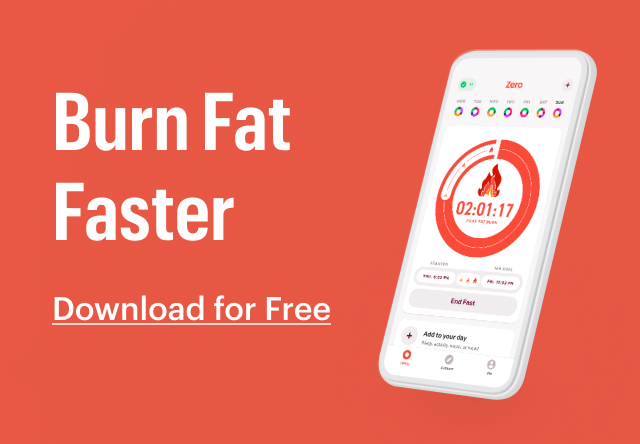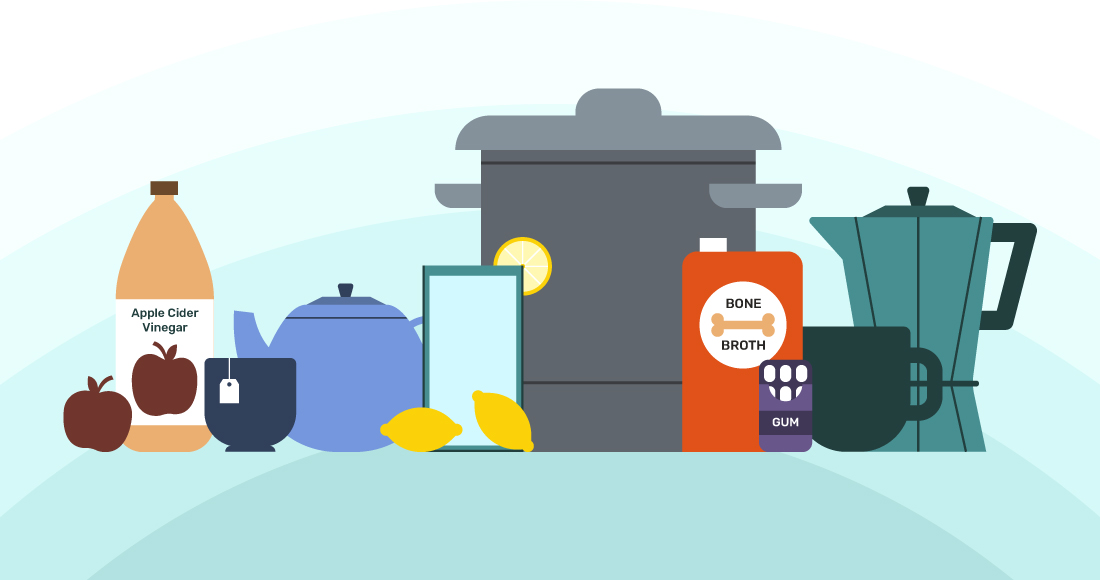As if maintaining healthy eating habits wasn’t hard enough, we now have even more obstacles facing us (like our fridge being roughly 16 steps away at all times). Although there have been some new challenges to acquiring food, many of us are now in an environment with 24/7 access to food and nutrition plans have been tossed aside due to other priorities. Emotions are high, and some of us might be turning to unhealthy foods more frequently to cope. However, now is actually a great time to make better food choices so that we optimize our health and immune systems.
So, how do we get back on track?
Find the Right Fasting Plan
Fasting can still play an important role in your nutrition routine and is a useful tool when other aspects of our diet may not optimal. Many find it easier to practice a time-restricted feeding plan instead of managing specific dietary restrictions. Having a defined window for eating is generally much simpler than counting macronutrients and planning out each meal with controlled ingredients.
That said, prolonged fasts should be considered on a case by case basis. Studies have shown that multi-day fasts can increase the stress response of the body, potentially impacting our immune system. During a time like this when we have a higher chance of being infected by a virus, we may not want to add any additional stress to the body. However, shorter fasts (less than 48 hours) are likely still safe and can help with routine building around food consumption.
Most importantly, listen to your body. If you start a fast, but you’re feeling weak or fatigued, end it early. Or, you might be feeling great after a 24-hour fast and choose to extend it 36 hours. Either way, do what’s best for you in that moment and as always, consult your health care practitioner with questions or concerns.
Create Small, Realistic Goals
Focusing on healthy habit formation can be challenging under any circumstances, but in a time when routines have changed and stress is high, it can feel even more daunting. So let’s start small.
Focus on the short term and ensure goals are realistic. Small, achievable goals help you build confidence and regain a sense of control. Think of something that will be quick to change and that won’t require a lot of effort to get the momentum going. Build up your confidence and add additional goals from there. Some example ideas to inspire you: try one new vegetable a week, have dessert one less day a week, or increase your water intake from 6 to 8 glasses a day.
One useful tool for creating these goals is to use SMART goals. SMART stands for:
- Specific
- Measurable
- Achievable
- Relevant
- Time bound
For example, if you want to decrease your sugar intake, consider structuring your goal like this: I will reduce my cookie intake (specific and relevant since it is a source of sugar) from 10 cookies a week to 5 cookies a week (measurable and achievable) for the month of May (time bound).
Optimize Your Food Environment
Now that most of us are confined to our homes and have frequent access to food, the environment that we create in our kitchen and pantries is more important than ever. Willpower and motivation to make healthy nutrition choices can only go so far. At some point, we all become vulnerable to our environment and the easy, tempting choices that surround us. Hey, no one can argue that it’s easier to grab a bag of potato chips than prepping all the ingredients that go into a salad.
So how can you make healthy choices easier? Maybe you can pre-chop some vegetables, buy a salad mix, meal prep at the beginning of the week, or stock your pantry with healthy choices that require little to no preparation.
Elimination of temptation is also a big factor. When we have the choice between a handful of M&M’s or a handful of carrots, the M&M’s will likely win (especially when it’s 4pm, you’re hungry, the kids have been misbehaving all day, and the stress of work deadlines is weighing on you). Think about how you can remove, or possibly hide, the tempting items you want to reduce or eliminate from your diet, and optimize the healthier options you want to incorporate.
Now, let’s take action. Take some time this week to look closely at what you have in your kitchen. Are there items in there that you keep snacking on that don’t fit within your ideal nutrition framework? Are they not even that tasty when you really think about it? If so, throw them away or once they are gone, make it a point not to purchase those again. Use this strategy to start getting rid of excess sugar, processed carbohydrates, and junk foods. Once you have that extra room in your pantry and fridge, think about how you can optimize your next food purchases. Consider stocking up on fresh vegetables (baby carrots, tomatoes, cucumber, celery), nuts and seeds, olives, avocados, hard boiled eggs, and roasted kale snacks, which are quick, nutritious options that can last a few days to a few weeks.
Have an Accountability Partner
Once you’ve set your nutrition goals, consider finding an accountability partner. Share your plan with someone to help make the goal more concrete, create motivation, and provide a sense of support and encouragement. Think about posting your goals on social media, or announcing your plan to your coworkers, family, or friends.
Even better? Sharing the same goals with someone else. Consider finding a friend or family member who also wants to improve their nutrition. Come up with a specific plan together and you’ve got an instant support system. Sharing in successes (and struggles) will make forging ahead a bit easier.
Find Other Ways to Manage Negative Emotions
Social distance, changes at work, lack of childcare, and feelings of uncertainty are just some of the very real things we’re facing that can impact our emotional wellbeing. Stress, boredom, anxiety, and sadness are prevalent, and for many people, these emotions are also triggers for food consumption. Food—especially items higher in sugar, processed carbohydrates, and unhealthy fats—can be used to provide a feeling of comfort and temporary happiness. However, these types of foods rarely fit into a nutrition routine focused on optimizing health and longevity.
Difficult emotions should certainly be addressed, but ideally not with poor food choices or other negative vices. It’s important to determine other ways you can cope with what you’ve been feeling in the last couple of months. Some alternative ideas for managing emotions include:
- Stress: take a walk, read a book, meditate, draw a bath, or get a massage
- Anxiety: find ways to release and channel pent-up energy like exercise, painting something abstract, or building something
- Boredom: take on a new hobby, start a puzzle, get outside, or take a quick walk around the block
- Sadness or loneliness: call a friend or family member, look back on old photos or videos, play with your pet (or adopt a pet!), or find ways to help others
Hopefully, some of these ideas will be positive solutions for you, however, find what works best. In some cases, there are deeper issues involved with these feelings and it’s important to speak with a professional about them in order to properly address what is going on. Virtual counseling sessions are a great tool to address emotional needs.
Finally, don’t expect yourself to be perfect. Sometimes we really do need a slice of grandma’s famous chocolate pie or that irresistible croissant from the local bakery that’s available for curbside pickup. It’s ok to occasionally indulge. Just keep moderation in mind, and realize that food can be a pleasurable experience, but it is rarely the solution to our emotional problems.
In Summary
Nutrition is challenging during this time, but also an important part of staying healthy. Increased exposure to food, changes in our normal routine, and heightened emotions have made positive food choices harder to make. We hope the tips and tricks here can help. Share how you’re navigating at-home nutrition in the comments.

- Zero Live #4: 3 Ways to Boost Fat Burning - March 28, 2024
- Zero Live #3: Nutrition, Fast Breakers, and Fasting - March 11, 2024
- Zero Live #2: Metabolism, Insulin, and Fat Burning - February 29, 2024










